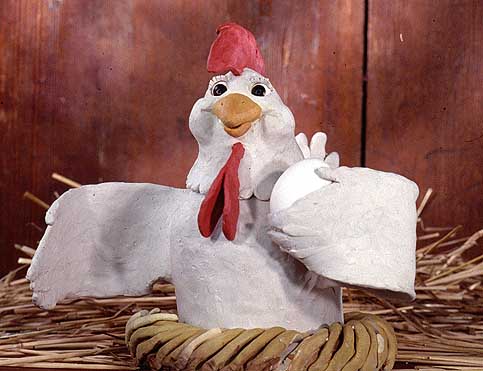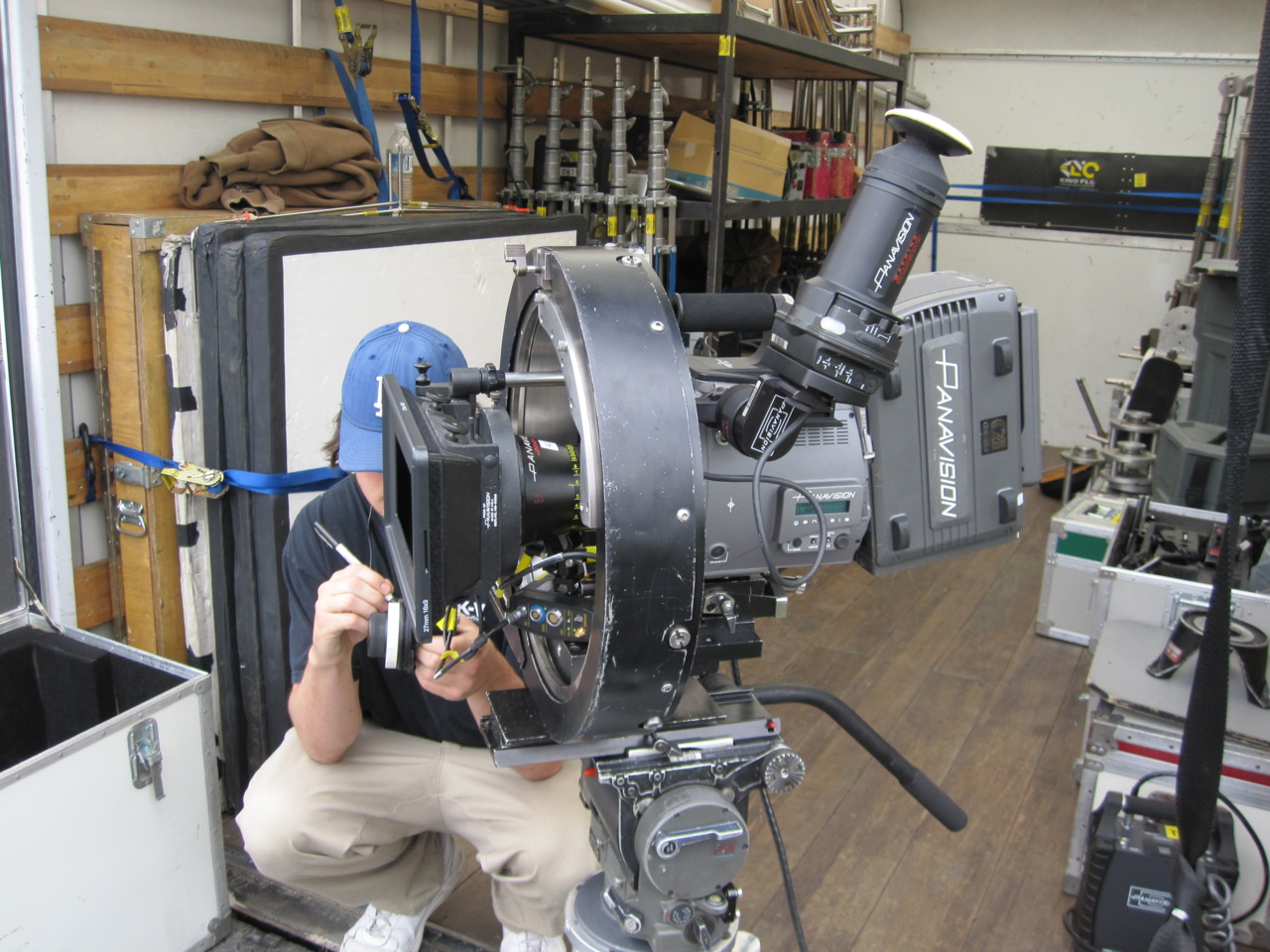|
Man With A Movie Camera
''Man with a Movie Camera'' is an experimental 1929 Soviet silent documentary film, directed by Dziga Vertov, filmed by his brother Mikhail Kaufman, and edited by Vertov's wife Yelizaveta Svilova. Kaufman also appears as the titular Man. Vertov's feature film, produced by the film studio All-Ukrainian Photo Cinema Administration (VUFKU), presents urban life in Moscow, Kiev and Odessa during the late 1920s.facsimile It has no actors. From dawn to dusk Soviet citizens are shown at work and at play, and interacting with the machinery of modern life. To the extent that it can be said to have "characters", they are the cameramen of the title, the film editor, and the modern Soviet Union they discover and present in the film. ''Man with a Movie Camera'' is famous for the range of cinematic techniques Vertov invented, employed or developed, such as multiple exposure, fast motion, slow motion, freeze frames, match cuts, jump cuts, split screens, Dutch angles, extreme close-ups, ... [...More Info...] [...Related Items...] OR: [Wikipedia] [Google] [Baidu] |
Dziga Vertov
Dziga Vertov (born David Abelevich Kaufman; – 12 February 1954) was a Soviet pioneer documentary film and newsreel director, as well as a cinema theorist. His filming practices and theories influenced the cinéma vérité style of documentary movie-making and the Dziga Vertov Group, a radical film-making cooperative which was active from 1968 to 1972. He was a member of the Kinoks collective, with Elizaveta Svilova and Mikhail Kaufman. In the 2012 ''Sight & Sound'' poll, critics voted Vertov's '' Man with a Movie Camera'' (1929) the eighth-greatest film ever made. Vertov's younger brothers Boris Kaufman and Mikhail Kaufman were also noted filmmakers, as was his wife, Yelizaveta Svilova. He worked with Boris Kaufman and cinematographer Mikhail Kaufman on his most famous film ''Man with a Movie Camera''. Biography Early years Vertov was born David Abelevich Kaufman into a Jewish family in Białystok, Poland, then a part of the Russian Empire. He Russified his Jewish name ... [...More Info...] [...Related Items...] OR: [Wikipedia] [Google] [Baidu] |
Time-lapse
Time-lapse photography is a technique in which the frequency at which film frames are captured (the frame rate) is much lower than the frequency used to view the sequence. When played at normal speed, time appears to be moving faster and thus ''lapsing''. For example, an image of a scene may be captured at 1 frame per second but then played back at 30 frames per second; the result is an apparent 30 times speed increase. Processes that would normally appear subtle and slow to the human eye, such as the motion of the sun and stars in the sky or the growth of a plant, become very pronounced. Time-lapse is the extreme version of the cinematography technique of undercranking. Stop motion animation is a comparable technique; a subject that does not actually move, such as a puppet, can repeatedly be moved manually by a small distance and photographed. Then, the photographs can be played back as a film at a speed that shows the subject appearing to move. Conversely, film can be pl ... [...More Info...] [...Related Items...] OR: [Wikipedia] [Google] [Baidu] |
Sight & Sound
''Sight and Sound'' (formerly written ''Sight & Sound'') is a monthly film magazine published by the British Film Institute (BFI). Since 1952, it has conducted the well-known decennial ''Sight and Sound'' Poll of the Greatest Films of All Time. History and content ''Sight and Sound'' was first published in Spring 1932 as "A quarterly review of modern aids to learning published under the auspices of the British Institute of Adult Education". In 1934, management of the magazine was handed to the nascent British Film Institute (BFI), which still publishes the magazine today. ''Sight and Sound'' was published quarterly for most of its history until the early 1990s, apart from a brief run as a monthly publication in the early 1950s, but in 1991 it merged with another BFI publication, the ''Monthly Film Bulletin'', and started to appear monthly. In 1949, Gavin Lambert, co-founder of film journal ''Sequence'', was hired as the editor, and also brought with him ''Sequence'' editor ... [...More Info...] [...Related Items...] OR: [Wikipedia] [Google] [Baidu] |
Form And Content
In art and art criticism, form and content are considered distinct aspects of a work of art. The term ''form'' refers to the work's composition, techniques and media used, and how the elements of design are implemented. It mainly focuses on the physical aspects of the artwork, such as medium, color, value, space, etc., rather than on what it communicates. ''Content'', on the other hand, refers to a work's subject matter, i.e., its meaning. But the terms form and content can be applied not only to art: every meaningful text has its inherent form, hence form and content appear in very diverse applications of human thought: from fine arts to even mathematics and natural sciences. Even more, the distinction between these terms' meanings in different domains of application seems rather unnatural, since the idea behind "form and content in art" and "form and content in science" is pretty much the same. Usage in art Form is one of the most frequent terms in literary criticism. It is ... [...More Info...] [...Related Items...] OR: [Wikipedia] [Google] [Baidu] |
Metafiction
Metafiction is a form of fiction that emphasizes its own narrative structure in a way that inherently reminds the audience that they are reading or viewing a fictional work. Metafiction is self-conscious about language, literary form, and storytelling, and works of metafiction directly or indirectly draw attention to their status as artifacts. Metafiction is frequently used as a form of parody or a tool to undermine literary conventions and explore the relationship between literature and reality, life and art. Although metafiction is most commonly associated with postmodern literature that developed in the mid-20th century, its use can be traced back to much earlier works of fiction, such as '' The Canterbury Tales'' (Geoffrey Chaucer, 1387), ''Don Quixote'' Part Two (Miguel de Cervantes, 1615), '' Chymical Wedding of Christian Rosenkreutz'' ( Johann Valentin Andreae, 1617), '' The Cloud Dream of the Nine'' ( Kim Man-jung, 1687), '' The Life and Opinions of Tristram Shandy, G ... [...More Info...] [...Related Items...] OR: [Wikipedia] [Google] [Baidu] |
Fast Cutting
Fast cutting is a film editing technique which refers to several consecutive shot (filming), shots of a brief duration (e.g. 3 seconds or less). It can be used to quickly convey much information, or to imply either energy or chaos. Fast cutting is also frequently used when shooting dialogue between two or more characters, changing the viewer's perspective to either focus on the reaction of another character's dialog, or to bring to attention the non-verbal actions of the speaking character. One famous example of fast cutting is the shower scene in Alfred Hitchcock's film ''Psycho (1960 film), Psycho'' (1960). More recent examples include the can-can scene in Baz Luhrmann's ''Moulin Rouge!'' (2001). The film ''Mind Game (film), Mind Game'' makes extensive use of fast cutting to convey hundreds of short scenes in the space of fifteen minutes. In ''Run Lola Run'', fast cutting is used to quickly tell stories about minor characters to show how the casual actions of the protagonists ... [...More Info...] [...Related Items...] OR: [Wikipedia] [Google] [Baidu] |
Stop Motion
Stop-motion (also known as stop frame animation) is an animated filmmaking and special effects technique in which objects are physically manipulated in small increments between individually photographed frames so that they will appear to exhibit independent motion or change when the series of frames is played back. Any kind of object can thus be animated, but puppets with movable joints (puppet animation) or clay figures (claymation) are most commonly used. Puppets, models or clay figures built around an armature are used in model animation. Stop motion with live actors is often referred to as pixilation. Stop motion of flat materials such as paper, fabrics or photographs is usually called cutout animation. Terminology The term "stop-motion", relating to the animation technique, is often spelled without a hyphen as "stop motion"—either standalone or as a compound modifier. Both orthographic variants, with and without the hyphen, are correct, but the hyphenated one is th ... [...More Info...] [...Related Items...] OR: [Wikipedia] [Google] [Baidu] |
Tracking Shot
In cinematography, a tracking shot is any shot where the camera follows backward, forward or moves alongside the subject being recorded. Mostly the camera’s position is parallel to the character, creating a sideway motion, tracking the character. Tracking shots (also called travel shots) differ in motion from dolly shots, where the camera follows behind or before the character resulting in either an inward or an outward movement. Often the camera is mounted on a camera dolly which rides on rails similar to a railroad track; in this case, the shot is referred to as a dolly shot. A handheld steadycam or gimbal may also be used for smaller scale productions. The camera is then pushed along the track while the scene is being filmed, or moved manually when using a handheld rig. The effect can be used to create a sense of movement, to follow a character or object, or a sense of immersion to draw the viewer into the action. The technique is often used to follow a subject that would ... [...More Info...] [...Related Items...] OR: [Wikipedia] [Google] [Baidu] |
Close-up
A close-up or closeup in filmmaking, television production A television show, TV program (), or simply a TV show, is the general reference to any content produced for viewing on a television set that is broadcast via over-the-air, satellite, and cable, or distributed digitally on streaming plat ..., photography, still photography, and the comic strip medium is a type of shot (filmmaking), shot that tightly film frame, frames a person or object. Close-ups are one of the standard shots used regularly with medium and long shots (cinematic techniques). Close-ups display the most detail, but they do not include the broader scene. Moving toward or away from a close-up is a common type of zooming (filmmaking), zooming. A close up is taken from head to neck, giving the viewer a detailed view of the subject's face. History Most early filmmakers, such as Thomas Edison, Auguste and Louis Lumière and Georges Méliès, tended not to use close-ups and preferred to frame their s ... [...More Info...] [...Related Items...] OR: [Wikipedia] [Google] [Baidu] |
Dutch Angle
In filmmaking and photography, the Dutch angle, also known as Dutch tilt, canted angle, vortex plane, or oblique angle, is a type of camera shot that involves setting the camera at an angle so that the shot is composed with vertical lines at an angle to the side of the frame, or so that the horizon line of the shot is not parallel with the bottom of the frame. This produces a viewpoint akin to tilting one's head to the side. In cinematography, the Dutch angle is one of many cinematic techniques often used to portray psychological uneasiness or tension in the subject being filmed. The Dutch angle is strongly associated with German expressionist cinema, which employed it extensively. Etymology The "Dutch" in "Dutch angle" is held by some to be a corruption of the German word ''Deutsch'' (meaning "German") due to the supposed popularity of the shot in silent-era German films. Alternatively, the adjective "Dutch" is thought to indicate something out of the ordinary (compare Dutch ... [...More Info...] [...Related Items...] OR: [Wikipedia] [Google] [Baidu] |
Split Screen (film)
In film and video production, split screen is the visible division of the screen, traditionally in half, but also in several simultaneous images, rupturing the illusion that the screen's frame is a seamless view of reality, similar to that of the human eye. There may or may not be an explicit borderline. Until the arrival of digital technology, a split screen in films was accomplished by using an optical printer to combine two or more actions filmed separately by copying them onto the same negative, called the composite. In filmmaking split screen is also a technique that allows one actor to appear twice in a scene. The simplest technique is to lock down the camera and shoot the scene twice, with one "version" of the actor appearing on the left side, and the other on the right side. The seam between the two splits is intended to be invisible, making the duplication seem realistic. Influences An influential arena for the great split screen movies of the 1960s were two world's ... [...More Info...] [...Related Items...] OR: [Wikipedia] [Google] [Baidu] |
Jump Cut
A jump cut is a cut (transition), cut in film editing that breaks a single continuous sequential shot of a subject into two parts, with a piece of footage removed to create the effect of jumping forward in time. Camera positioning on the subject across the sequence should vary only slightly to achieve the effect. The technique manipulates temporal space using the duration of a single shot—fracturing the duration to move the audience ahead. This kind of cut abruptly communicates the passing of time, as opposed to the more seamless dissolve heavily used in films predating Jean-Luc Godard's ''Breathless (1960 film), Breathless'', which extensively used jump cuts and popularized the technique in the 1960s. For this reason, jump cuts are considered a violation of classical continuity editing, which aims to give the appearance of continuous time and space in the story-world by de-emphasizing editing, but are sometimes nonetheless used for creative purposes. Jump cuts tend to draw att ... [...More Info...] [...Related Items...] OR: [Wikipedia] [Google] [Baidu] |







